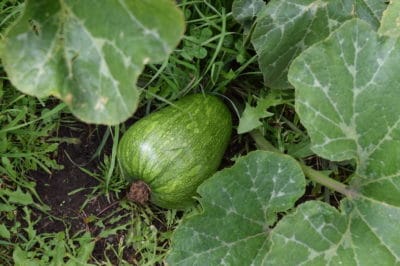When to Plant Butternut Squash Seeds
Butternut squash, like all winter squash varieties, requires approximately 10-120 days to harvest. Additionally, it is a cold-sensitive plant, so you cannot plant outdoors until the soil is consistently 65°F (18°C). The squash seeds will not germinate in cold soil.
Once the soil has reaches the correct temperature, which is usually about two weeks after the last frost date, you can safely plant your butternut squash.
Tip: You can purchase a soil thermometer at a local nursery or home and garden store.
How to Plant Butternut Squash
Like most winter squash requiring a long growing season, butternut squash performs better when planted in a hill. Mound the soil up at the height of 18 inches (46 cm) and plant six seeds around the perimeter. Once the seeds have sprouted and grown their first set of leaves, pull the weakest plants and leave three or four plants to continue growing.
Additionally, butternut requires a minimum of six hours of full sun per day. However, they perform best when you plant them in a sunny location with no shade.
Tip: You can sow butternut squash in rows. However, hills allow the soil to warm more quickly and keep the plant roots from becoming water-logged.
Caring for Butternut Squash Plants
Once the butternut squash plants are well established, you need to provide a few critical elements:
- Ample water. Aim for 1 inch (2.5 cm)per week, or whenever the topsoil appears dry.
- Frequent fertilizing. A high-quality organic fertilizer should be applied every three weeks a directed on the packaging.
- Weed control. Weeds will quickly overtake a butternut squash plant.
Tip: You can also mulch the plants with several inches of organic mulch. Mulching helps the vegetables retain water and provides some natural weed control.
The End Result
If you have provided the best possible growing environment for your butternut squash plants, the reward will be plenty of fruits to eat and store for the winter.
